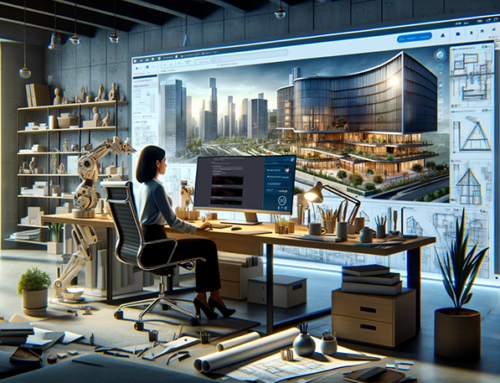By Michael Hughes, Director of Faculty Development for the Education for Working Professionals Program at Rensselaer Polytechnic Institute
What do you think of when you hear the phrase “solar energy”? There’s a good chance that solar panels come to mind. They seem to be everywhere now, exploiting residential rooftops and large open fields for an unobstructed view of the sun. While you are probably accustomed to seeing solar panels used in this way, have you ever wondered why you don’t see them on the walls of buildings? After all, commercial buildings account for more than 35% of electricity use in the U.S. and many tall buildings have large surfaces that receive sunlight. So, why not put solar panels on those surfaces to generate electricity?
In 2011, our team had this exact question. It arose while we were dreaming about using our research on luminescent solar concentrators (LSC) to develop a new solar energy product for buildings. LSCs can be used to collect sunlight and redirect it onto small strips of solar cells. This allows sunlight to be collected from a large surface area while requiring only a fraction of the solar cells used on a traditional solar panel. Plus, when viewed from below, or at eye level, the small strips of solar cells are mostly hidden, which means our technology looks very different from a solar panel. And so we thought, why not use our technology on the walls of buildings? But first we needed to understand why solar panels aren’t found there.
We came to realize that the answer is much more complicated than our engineering brains alone had assumed. The answer didn’t lie with just math and science. In fact, our understanding of solar energy in the built environment only really blossomed once we put down our computers, got out of the building, and began to do customer interviews — a core principle of the National Science Foundation (NSF) Innovation Corps (I-Corps) Site Program run by the Paul J. ’69 and Kathleen M. Severino Center for Technological Entrepreneurship, a center of excellence in the Lally School of Management at Rensselaer. After over 30 customer interviews, we began to appreciate the logistic, cost, and aesthetic factors that go into what building owners want, and what architects choose, to put on the exterior of their buildings. Most memorable though, were our conversations with architects who consistently expressed a strong desire to incorporate solar energy into their building designs but didn’t have a product that they could easily work with. This led to the pivotal realization that all solar panels look nearly the same — they are flat, rectangular, and blue to black in color.
With these critical takeaways from our time “getting outside the building,” and a new appreciation of the power behind customer interviews, our team continues to dream of changing the paradigm of solar energy in the built environment by creating building products that generate electricity from the sun but look nothing like what you would associate with solar energy. This is possible because the unique design of our LSC technology allows aesthetic and design flexibility that would be costly, or even impossible, with other photovoltaic-based products. The primary advantages of our technology are that the solar cells are hidden and less solar cells are required to produce the same amount of electricity as a solar panel. While our journey has only just begun, we hope that we can fundamentally change the look of solar energy so that surfaces can generate electricity, without anyone even knowing it.




